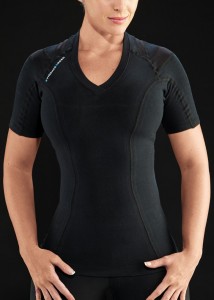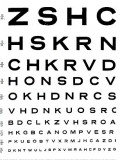
It’s not how long you sit, it’s how…
By Bill Schultz
To some extent, beauty is in the eye of the beholder, but the things we consider beautiful usually share certain characteristics, with symmetry and vitality being chief among them, says CEO Bill Schultz.
“The human body is an excellent example,” says Schultz, president of posture innovator AlignMed, www.alignmed.com, and recent recipient of a special Congressional Recognition certificate for his contributions. “The people we view as physically attractive are usually healthy and symmetrical in appearance. That’s not a coincidence; postural symmetry and good health go hand in hand.”
Good posture – holding the head, shoulders and trunk in perfect alignment – creates balance, which allows our many physiological systems to function optimally, Schultz says. When we habitually sit, stand or walk in a less than a fully aligned position, muscles stretch or contract to accommodate. This can result in chronic imbalances that can lead to pain. Studies dating back to the 19th century also suggest our posture affects mood, energy and self-confidence, all of which affect how attractive we appear to others.
“You don’t see supermodels, A-list actors or the rest of the ‘beautiful people’ slouched over as they strut down the runway or red carpet,” Schultz notes.
“Think about the importance of posture among the most challenging sports; for track runners, ballerinas and gymnasts, optimal posture is essential,” says Schultz, who explores four ways in which posture is part of the beauty-health connection.
• It’s not just sitting for hours on end that’s bad for you; it’s how one sits. The dangers of sitting have garnered plenty of attention in recent years, especially since we have become a society of sitters. Sitting for long periods comes with many health risks, including obesity and cardiovascular disease. But sitting with less than perfect posture – most frequently, sitting with the head and should in a forward position over a desk — can cause significant neck pain, which involves muscles and nerves from the neck down. Proper posture can prevent neck and spinal damage.
• More than 116 million Americans, or a third of the population, suffer from chronic pain at some point in their lives. That’s according to a recent report from the Institute of Medicine. Chronic pain means that a sufferer has anywhere from 30 to 60 days of lasting pain, and this massive problem is estimated to cost Americans $635 billion dollars. For many, treatment and/or prevention is out of reach, however, a reliable and easy way to prevent chronic pain is to maintain good posture.
• A strong, well-functioning core is crucial for training and optimal health. The bulk of a body’s mass is located at and around one’s core, including the trunk and pelvis region. Today’s fitness fanatics firmly grasp the importance of a healthy core. Surprisingly, however, much of the health-conscious population today is muscle-centric and does not fully appreciate the importance of posture, even though proper posture facilitates core strengthening, especially while exercising.
 • Using passive therapy to continuously improve posture. To feel and look your best, it’s important to maintain good posture throughout the day, but that’s difficult, especially for sedentary people. Neurologists at Rush University Medical Center say passive therapy can be even more effective than active therapy. Posture-enhancing apparel such as MyLign by AlignMed, worn by professional athletes including NBA player Dwight Howard, offer neurologic biofeedback that constantly remind the skeleton and muscles to self-correct. AlignMed founder Shultz says the shirts are not compression shirts, which squeeze the body and are primarily worn for aesthetics. “The shirts map muscles in the same way kinesio tape – used to reduce inflammation, relax muscles and enhance performance – assists world-class athletes,” he says.
• Using passive therapy to continuously improve posture. To feel and look your best, it’s important to maintain good posture throughout the day, but that’s difficult, especially for sedentary people. Neurologists at Rush University Medical Center say passive therapy can be even more effective than active therapy. Posture-enhancing apparel such as MyLign by AlignMed, worn by professional athletes including NBA player Dwight Howard, offer neurologic biofeedback that constantly remind the skeleton and muscles to self-correct. AlignMed founder Shultz says the shirts are not compression shirts, which squeeze the body and are primarily worn for aesthetics. “The shirts map muscles in the same way kinesio tape – used to reduce inflammation, relax muscles and enhance performance – assists world-class athletes,” he says.













